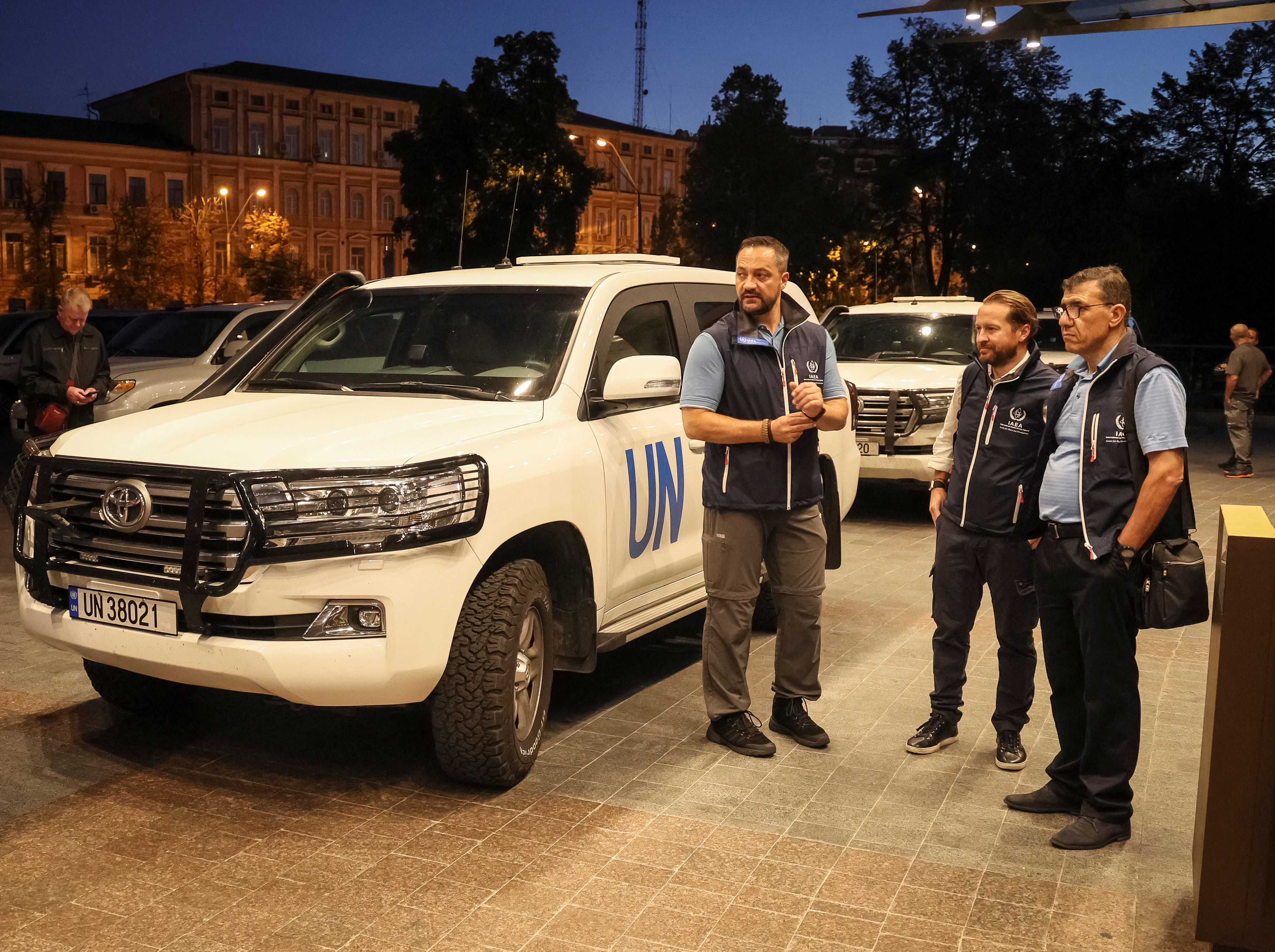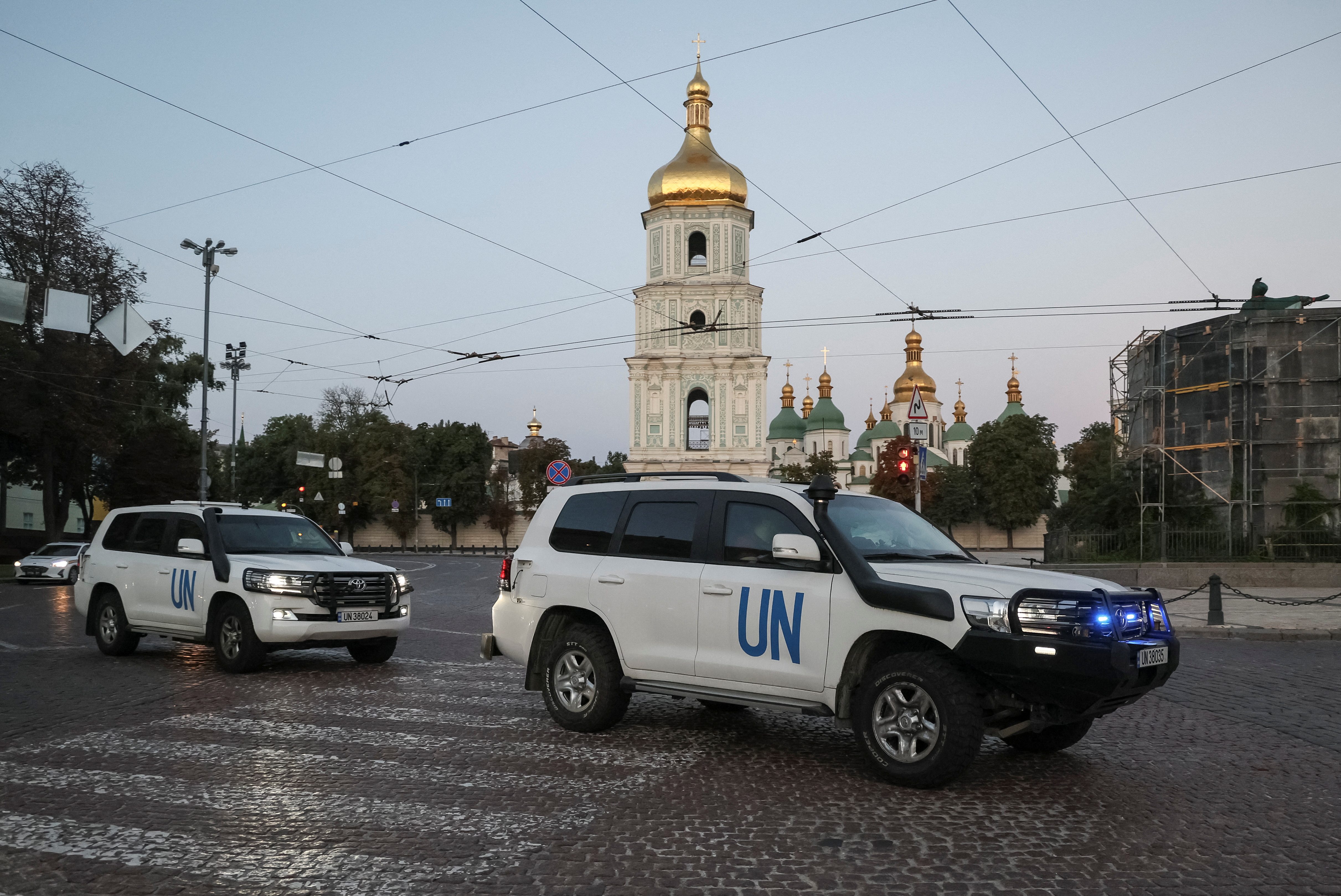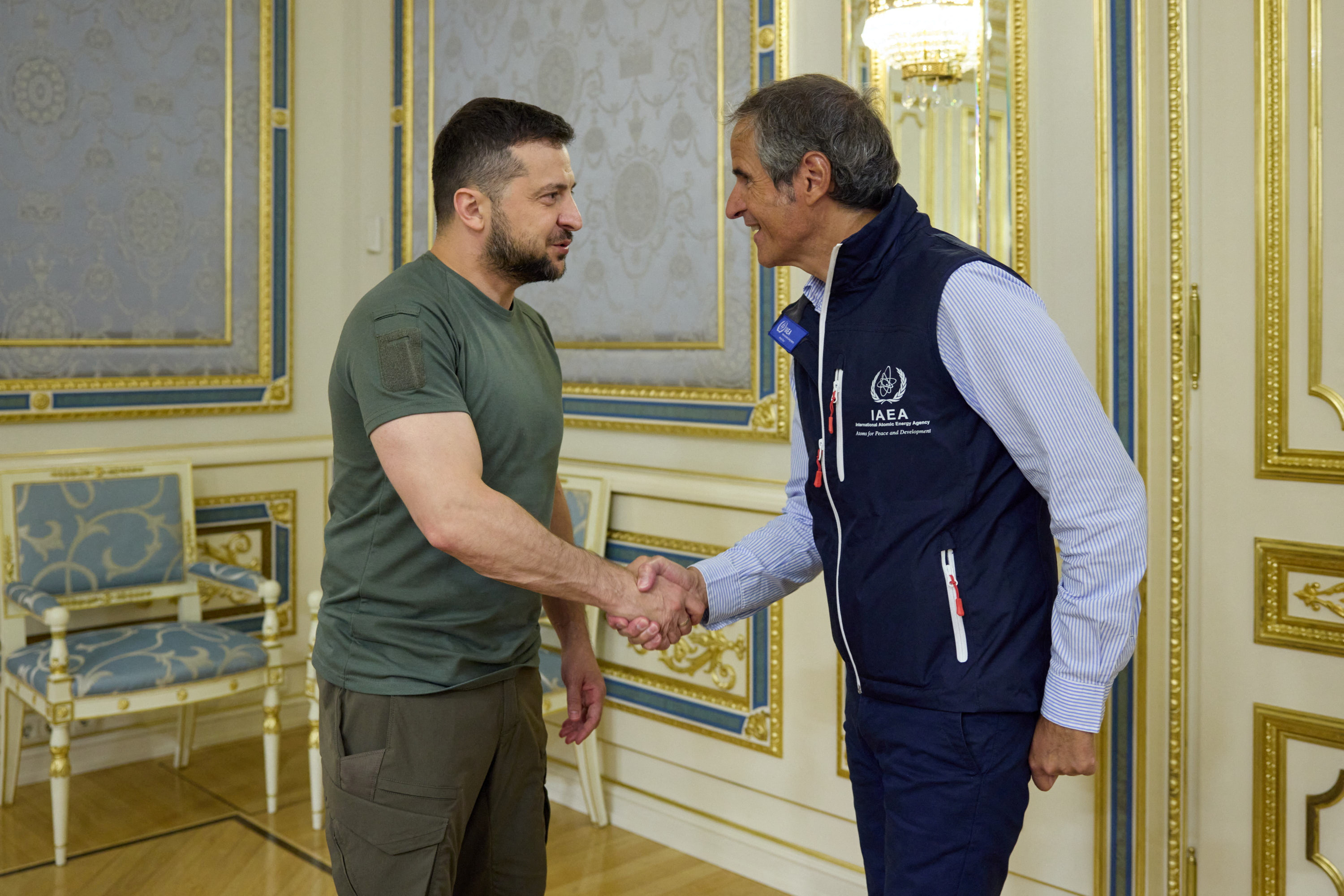
United Nations inspectors are due to visit the Russian-occupied Zaporizhzhia nuclear power plant – Europe’s largest nuclear facility – as they seek to safeguard the site amid artillery shelling that has prompted global fears of disaster.
The International Atomic Energy Agency (IAEA) mission arrived in the southern city of Zaporizhzhia, located 55 km (34 miles) from the plant, on Wednesday and Ukraine’s defence ministry said the inspectors were scheduled to visit the facility on Thursday.
For weeks now, Ukraine and Russia have accused each other of endangering the Zaporizhzhia plant’s safety with shelling or drone strikes, risking a Chernobyl-style radiation disaster.
Kyiv says Russia has been using the plant as a shield for its forces to hit towns and cities, knowing it will be hard for Ukraine to return fire. It has also accused Russian forces of shelling the plant.
Russia has denied Ukrainian assertions of reckless behaviour, questioning why it would shell a facility where its own troops are garrisoned as what it calls a security detail.
Arriving on Wednesday afternoon in Zaporizhzhia city, IAEA chief Rafael Grossi said the “real work” will start on Thursday. He underscored the challenges ahead.
“It’s a mission that seeks to prevent a nuclear accident and to preserve this important – the largest, the biggest – nuclear power plant in Europe,” he said.
He said an initial tour will take a few days, after which “we will have a pretty good idea of what’s going on”.
The complex has been occupied by Russian forces but run by Ukrainian engineers since the early days of the six-month-old war and world leaders have demanded that the IAEA be allowed to inspect it.
The Russian defence ministry has said that radiation levels at the plant are normal.
Grossi said he had received “explicit guarantees” from Russia that the 14 experts would be able to do their work.
Grossi also said he is hoping the IAEA will be able to establish a “continued presence” at the plant to safeguard it against an accident.
The team’s work on the site, he added, will include a physical inspection of the place, the functioning of the safety system and interviews with the nuclear plant’s staff.
Mikhail Ulyanov, Russia’s representative to the international organisation in Vienna, welcomed the idea that the UN agency’s experts could stay at the site on a permanent basis.

While Ukraine sees the IAEA inspection as a step toward “de-occupying and demilitarising” the site, Russia has said it has no intention of withdrawing its forces for now, setting up the potential for further rancour.
“If they (the IAEA) draw up a report about violations and give it to Ukraine to fix them, we won’t be able to do that as long as the Russian military is there,” said Ukraine’s energy minister, German Galushchenko.
‘War games’
The world watched the mission’s progress with anxiety. European Union foreign policy chief Josep Borrell renewed a call to Russia to fully demilitarise the area around the plant.
“They are playing games. They are gambling with the nuclear security,” Borrell said. “We cannot play war games in the neighbourhood of a site like this.”
While the inspectors were on their way, Russia-backed local authorities accused Ukrainian forces of repeatedly shelling the plant grounds and city where it is situated, Enerhodar. They said drone attacks hit the plant’s administrative building and training centre.
Yevhen Yevtushenko, head of the administration in the Ukrainian-held city of Nikopol, across the Dnieper River from the plant, charged that the attacks were carried out by the Russians in a bid to make Ukraine look like the culprit.

Fighting for Kherson
Meanwhile, fighting continues on the ground, with Ukrainian officials saying they have had “successes” in three areas of the Russian-occupied region of Kherson, two days after Kyiv announced the start of a southern counteroffensive to retake territory.
Yuriy Sobolevskyi, the deputy head of Kherson’s regional council, told Ukraine’s national news broadcaster that Ukrainian troops had had successes in the Kherson, Berislav and Kakhovka districts but declined to give details.
Al Jazeera’s Teresa Bo said that it is worth noting that the front line has been very stable for the past weeks.
“None of these [Russian and Ukrainian] forces have been able to make any major accomplishments, so we’re going to have to see whether Ukraine has enough weapons and manpower to be able to liberate many of those cities that have been occupied by Russia,” she said.
Russia’s defence ministry disputed Ukraine’s claim of successes in the south, stressing that Ukrainian forces have rather suffered heavy losses in equipment and men.
In its daily briefing, Russia’s defence ministry said its forces had shot down three Ukrainian helicopters and that Ukraine had lost four fighter jets during two days of fighting around the Mykolaiv-Kryvyi Rih front line and in other areas of southern Ukraine.
The Reuters news agency and Al Jazeera were unable to verify the battlefield reports.







